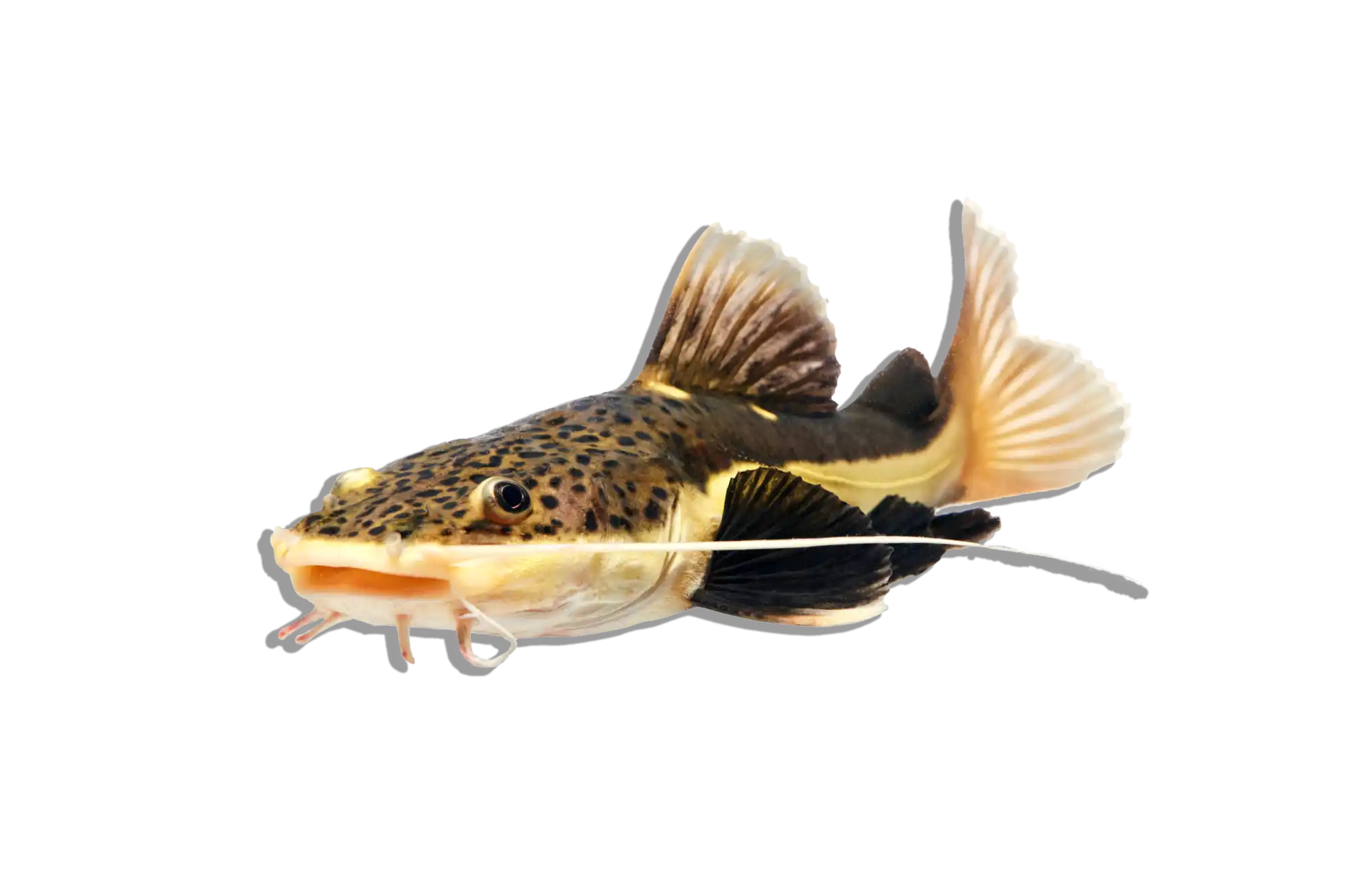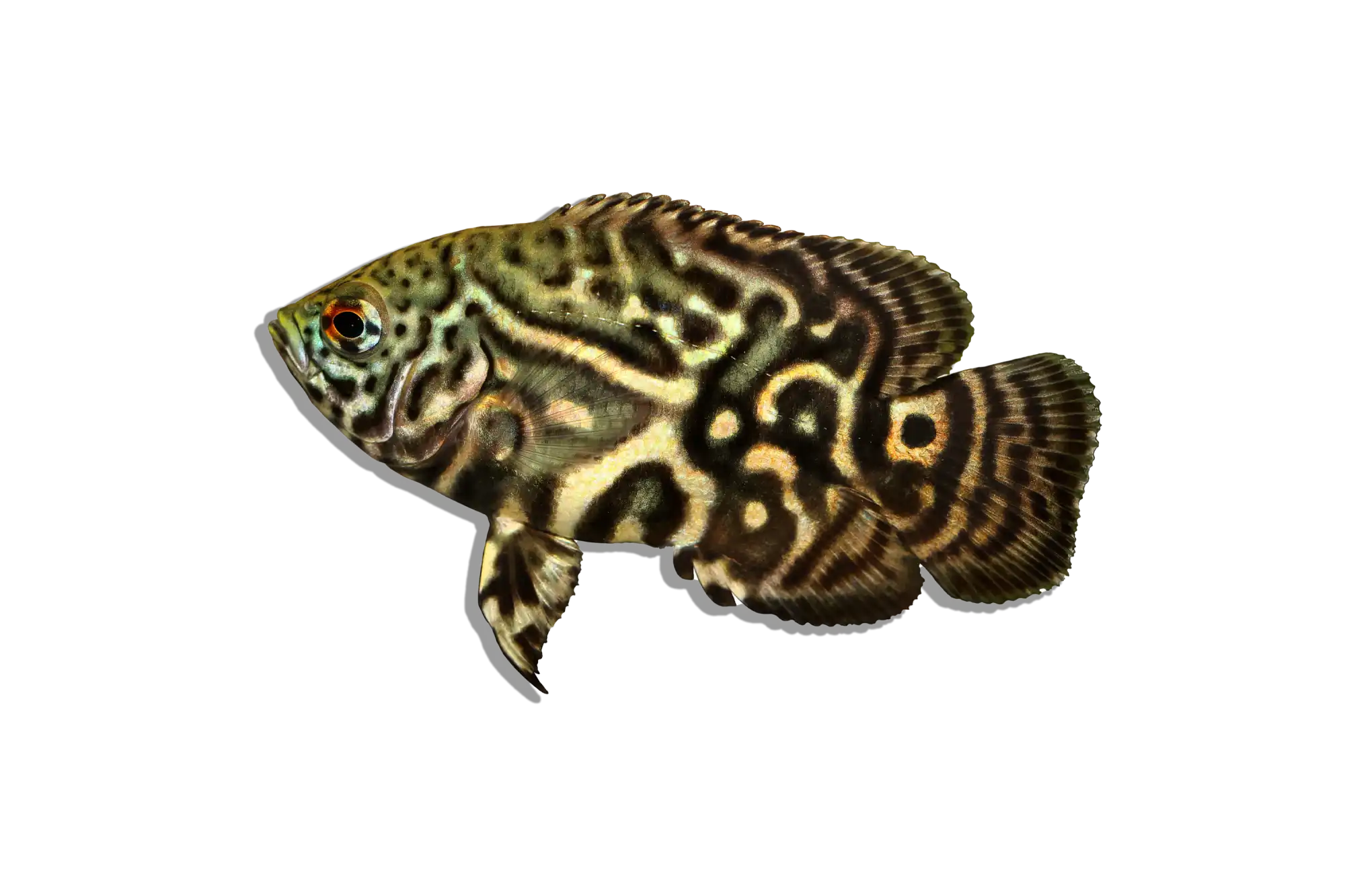Description
Common Name: Irwini Catfish
Scientific Name: Brachyplatystoma platynemum
Other Names: Irwin's Catfish, Irwin's Pimelodid
The Irwini Catfish is a fascinating freshwater species known for its distinctive appearance and impressive size. It is a member of the Pimelodidae family, characterized by its elongated body, long whisker-like barbels, and silvery-gray coloration with dark spots along its body. This species is a favorite among aquarists who appreciate large, predatory fish.
Habitat and Distribution:
The Irwini Catfish is native to the Amazon and Orinoco river basins in South America, particularly in Brazil, Colombia, and Venezuela. It inhabits deep river channels and large rivers with strong currents. These fish prefer sandy or rocky substrates where they can rest during the day and hunt for food during the night. The water in their natural habitat is typically warm, slightly acidic to neutral, and well-oxygenated.
Size and Lifespan:
In the wild, Irwini Catfish can grow up to 36 inches (91 cm) or more, while in captivity they typically reach about 24-30 inches (60-76 cm). Their lifespan ranges from 10 to 15 years, depending on the care and conditions provided.
Diet and Behavior:
Irwini Catfish are carnivorous, primarily feeding on smaller fish, crustaceans, and aquatic invertebrates in the wild. In captivity, they should be offered a diet of live or frozen foods such as fish, shrimp, and protein-rich pellets. They are nocturnal hunters, meaning they are most active during the night. These catfish are generally peaceful towards other large fish but may see smaller tank mates as prey. They are known for their strong swimming ability and require ample space to move around.
Breeding and Reproduction:
Breeding Irwini Catfish in captivity is extremely challenging and rarely achieved. Little is documented about their breeding habits in the wild. They are likely to spawn in specific conditions that are difficult to replicate in an aquarium setting. Successful breeding typically requires large, well-maintained tanks with optimal water conditions and possibly hormonal treatments to induce spawning.
Aquarium Care and Tank Requirements:
To keep Irwini Catfish, a very large aquarium of at least 200 gallons is recommended due to their size and active nature. The tank should have a soft, sandy substrate to prevent injury to their delicate barbels and plenty of hiding spots created with rocks, driftwood, and large caves. Efficient filtration and regular water changes are essential to maintain water quality, as these fish produce a significant amount of waste. The water temperature should be kept between 75-82°F (24-28°C) with a pH of 6.0-7.5 and moderate hardness.
Ideal Tank Mates:
Irwini Catfish can be kept with other large, peaceful fish that share similar water parameter requirements. Suitable tank mates include large cichlids, other large catfish, and robust fish that are too large to be considered prey. Avoid housing them with small or delicate species that may become targets of predation.
Difficulty Level:
Advanced. Keeping Irwini Catfish requires a deep understanding of their needs, including their large size, nocturnal behavior, and specific water quality requirements. They are best suited for experienced aquarists with the space and resources to provide proper care.
Water Parameters:
- Temperature: 75-82°F (24-28°C)
- pH: 6.0-7.5
- General Hardness (GH): 5-15 dGH
- Carbonate Hardness (KH): 4-10 dKH
- Ammonia: 0 ppm (ideal), up to 0.25 ppm (max)
- Nitrite: 0 ppm (ideal), up to 0.25 ppm (max)
- Nitrate: <20 ppm (ideal), up to 40 ppm (max)
Additional Information:
- The Irwini Catfish’s unique appearance and size make it a striking addition to any large aquarium.
- They are known for their strong swimming abilities and require plenty of open space to move around.
- In their natural habitats, Irwini Catfish play a role as apex predators, helping to control populations of smaller fish and invertebrates.
- Fun fact: The long barbels of the Irwini Catfish are highly sensitive and help them detect prey in the dark, murky waters of their natural habitat.



















